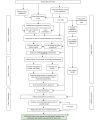Adapting a Telehealth Physical Activity and Diet Intervention to a Co-Designed Website for Self-Management After Stroke: Tutorial
- PMID: 39437389
- PMCID: PMC11538875
- DOI: 10.2196/58419
Adapting a Telehealth Physical Activity and Diet Intervention to a Co-Designed Website for Self-Management After Stroke: Tutorial
Abstract
People who experience a stroke are at a higher risk of recurrent stroke when compared with people who have not had a stroke. Addressing modifiable risk factors like physical inactivity and poor diet has been shown to improve blood pressure, a leading contributor to stroke. However, survivors of stroke often experience challenges with accessing risk reduction services including long wait lists, difficulty with transportation, fatigue, impaired function, and diminished exercise capacity. Providing health interventions via a website can extend the reach when compared with programs that are only offered face to face or via real-time telehealth. Given global challenges of accessing secondary prevention programs, it is important to consider alternative ways that this information can be made available to survivors of stroke worldwide. Using the "design thinking" framework and drawing on principles of the integrated knowledge translation approach, we adapted 2 co-designed telehealth programs called i-REBOUND - Let's get moving (physical activity intervention) and i-REBOUND - Eat for health (diet Intervention) to create the i-REBOUND after stroke website. The aim of this paper is to describe the systematic process undertaken to adapt resources from the telehealth delivered i-REBOUND - Let's get moving and i-REBOUND - Eat for health programs to a website prototype with a focus on navigation requirements and accessibility for survivors of stroke. We engaged a variety of key stakeholders with diverse skills and expertise in areas of stroke recovery, research, and digital health. We established a governance structure, formed a consumer advisory group, appointed a diverse project team, and agreed on scope of the project. Our process of adaptation had the following 3 phases: (1) understand, (2) explore, (3) materialize. Our approach considered the survivor of stroke at the center of all decisions, which helped establish guiding principles related to our prototype design. Careful and iterative engagement with survivors of stroke together with the application of design thinking principles allowed us to establish the functional requirements for our website prototype. Through user testing, we were able to confirm the technical requirements needed to build an accessible and easy-to-navigate website catering to the unique needs of survivors of stroke. We describe the process of adapting existing content and co-creating new digital content in partnership with, and featuring, people who have lived experience of stroke. In this paper, we provide a road map for the steps taken to adapt resources from 2 telehealth-delivered programs to a website format that meets specific navigation and accessibility needs of survivors of stroke.
Keywords: accessibility; co-design; how-to guide, website development; navigation; secondary prevention; self-management; stroke.
©Dina Pogrebnoy, Lee Ashton, Brian A Beh, Meredith Burke, Richard Cullen, Jude Czerenkowski, Julie Davey, Amy M Dennett, Kevin English, Erin Godecke, Nicole Harper, Elizabeth Lynch, Lesley MacDonald-Wicks, Amanda Patterson, Emily Ramage, Ben Schelfhaut, Dawn B Simpson, Karly Zacharia, Coralie English. Originally published in the Journal of Medical Internet Research (https://www.jmir.org), 22.10.2024.
Conflict of interest statement
Conflicts of Interest: None declared.
Figures
References
-
- Stroke, Cerebrovascular accident. World Health Organization. [2024-09-23]. https://www.emro.who.int/health-topics/stroke-cerebro vascular-accident/... .
-
- Australia's Health 2018. Australian Institute of Health and Welfare. [2024-09-23]. https://www.aihw.gov.au/getmedia/7c42913d-295 f-4bc9-9c24-4e44eff4a04a/a... .
-
- Global Health Estimates. World Health Organization. 2018. [2018-09-19]. https://www.who.int/data/global-health-estimates .
-
- Feigin V, Forouzanfar M, Krishnamurthi R, Mensah GA, Connor M, Bennett DA, Moran AE, Sacco RL, Anderson L, Truelsen T, O'Donnell M, Venketasubramanian N, Barker-Collo S, Lawes CMM, Wang W, Shinohara Y, Witt E, Ezzati M, Naghavi M, Murray C, Global Burden of Diseases‚ Injuries‚ and Risk Factors Study 2010 (GBD 2010)the GBD Stroke Experts Group Global and regional burden of stroke during 1990-2010: findings from the Global Burden of Disease Study 2010. Lancet. 2014 Jan 18;383(9913):245–54. doi: 10.1016/s0140-6736(13)61953-4. https://europepmc.org/abstract/MED/24449944 S0140-6736(13)61953-4 - DOI - PMC - PubMed
MeSH terms
LinkOut - more resources
Full Text Sources
Medical



